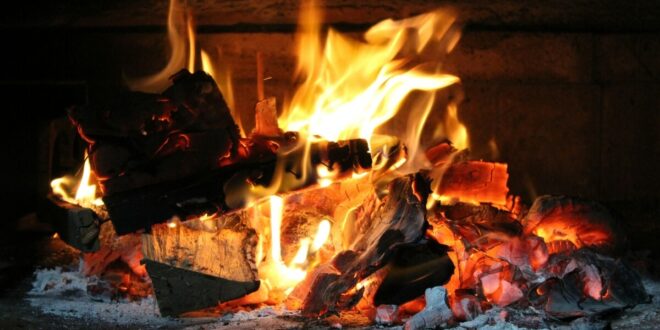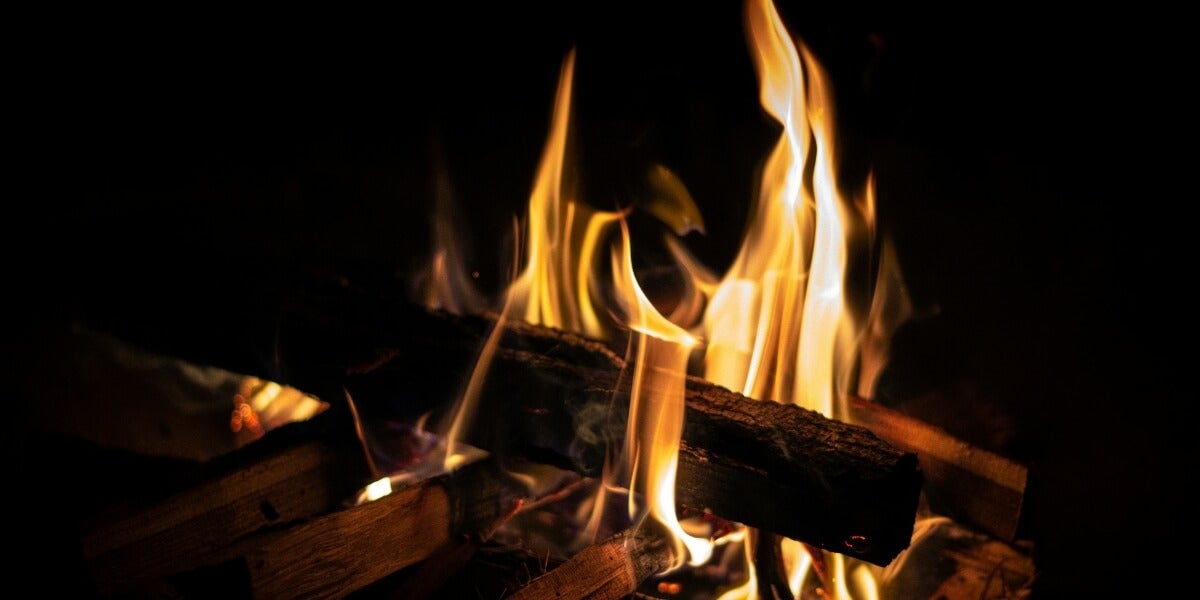Martin Banks 06.25.24

Is any mental image cozier than a log cabin with a blazing wood fireplace? Knowing how to care for these devices keeps you safe and protects your homestead. What should you know if you’re new to the world of wood heat? Here’s your homesteader’s how-to guide to wood fireplaces, including tips, tricks and mistakes to avoid.
Wood Fireplaces and Campfire Coverage on AllOutdoor
Choosing the Right Type of Wood Fireplaces
Fireplaces come in all shapes and sizes. Your first order of business is to determine whether yours burns wood — there are also gas, electric and ethanol models. Wood fireplaces have an empty firebox and may contain soot buildup from previous use. If building a cabin from the ground up, you have three choices:
- A traditional wooden fireplace integrated into the structure of your home
- A wood stove that’s freestanding but vents outside the home
- A pellet stove, which burns compressed wood or biomass
Each type has advantages and disadvantages. A traditional model creates the signature “hearth” many love, although building a chimney is a daunting task that usually requires a contractor. A wood stove is easier to install for DIYers and can heat non-traditional off-grid homes — some van-life folks even have them. Pellet stoves are similar to wood stoves but use compressed sawdust that burns longer and reduces the space requirement for storing logs. Wood and pellet stoves offer convenience if your property lacks a traditional fireplace, saving you thousands over having one built.
Maximizing Energy Efficiency
Can a fireplace make your cabin colder? Surprisingly, the answer is yes. Open fireplaces pull in outside air even when not in use and lose about 80% of their heat up the chimney. If installing a traditional fireplace, you have three options for minimizing heat loss:
- Heat exchangers use large tubes and a fan to circulate air back into the room and increase heat capture by 10%.
- Inserts create a closed combustion system that preserves heat but requires professional installation.
- Flue sealers are the least expensive option. It acts as a plug to stop downdrafts when the fireplace is not in use, and you can install it when cleaning the chimney.
If your property came with a fireplace, hiring a professional to inspect it protects your safety and provides recommendations on how to reduce your heat loss best. Those opting for wood or pellet stoves will find most models include pre-installed features to maximize energy efficiency, assuming you install it per the manufacturer’s recommendations.
Preventing Smoke, Creosote and Chimney Fires
The last thing you want is to have to flee into the cold as smoke floods your house. Chimney fires are even scarier, and it can take a long time for the fire department to reach you if you live off the grid. Any home with a wood fireplace should keep a fire extinguisher handy, although your property may still suffer severe damage if you fail to follow prevent creosote. Chimney fires can burn quietly or create an explosion — either way, they can destroy your home. Fortunately, you can prevent chimney fires by following these preventive tips:
- Inspect and clean your chimney at least once per year.
- Build small, hot fires that burn completely and create less smoke.
- Burn seasoned, thoroughly dry wood only. If you chop wood around your homestead, ensure you cure it for at least six to 12 months before use.
- Never burn cardboard boxes, paper or trash, which can spark a chimney fire.


Maintaining Your Wood Fireplaces
Maintaining your fireplace requires similar procedures regardless of fireplace type. Most experts recommend a professional chimney cleaning once per year. Hardy souls can DIY by following these tips:
- Seal your house by placing plastic sheeting around the fireplace to prevent debris from ruining your rug. Then, get on the roof, following proper ladder safety guidelines.
- Remove the chimney caps, which may require a drill with a screwdriver bit.
- Scrub the chimney with a chimney cleaning brush.
- Inspect with a flashlight to address spots you missed.
- Close the chimney and safely descend the ladder before cleaning up inside.
Routine maintenance includes removing the ashes after each use, regardless of fireplace type. If you have a wood or pellet stove, use an ash vacuum to clean the burnbox and firebox. On wood and pellet stoves, you should also clean the heat exchanger every two weeks. Gently scrape away carbon deposits and keep the glass clean so you can enjoy the fire’s rosy glow. Repair minor damage to traditional fireplaces — such as cracks or worn screens — promptly to improve efficiency. Keep the damper closed to limit moisture damage and debris when the fireplace is not in use.
Your Wood Fireplaces How-To Guide
A wood fireplace is the ultimate tool for making chilly evenings cozy. The right tips and tricks maintain the value of your investment and protect your home and safety. Follow this guide to avoid common mistakes when using your fireplace. With the right care and maintenance, you can enjoy your hearth’s warmth for years.
